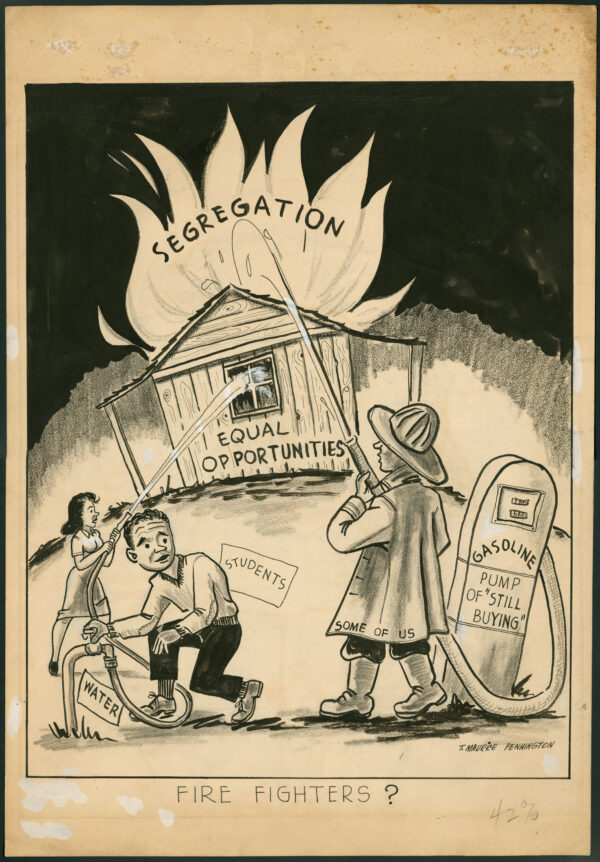
Political Cartoons of the Civil Rights Movement
Through analyzing the political cartoons created by Maurice Pennington, students will see how Pennington used satire to critique society and push for civil rights in Atlanta.
acf domain was triggered too early. This is usually an indicator for some code in the plugin or theme running too early. Translations should be loaded at the init action or later. Please see Debugging in WordPress for more information. (This message was added in version 6.7.0.) in /nas/content/live/ncchredu/wp-includes/functions.php on line 6121The civil rights movement in Atlanta played a significant role in shaping the city’s history. Key developments and active student involvement were integral to this transformative period. One pivotal event was the release of “An Appeal for Human Rights” in March 1960 by the Atlanta Committee on Appeal for Human Rights. This crucial document condemned the discriminatory conditions faced by Black citizens in the city that was supposed to be “Too Busy to Hate.”
The release of this appeal set the stage for a sustained campaign led by the Committee on Appeal for Human Rights (COAHR). The committee organized sit-ins and boycotts to demand an end to segregation and racial injustices. Students from Atlanta’s Historically Black Colleges and Universities (HBCUs), such as Lonnie King, Joseph Pierce, and Julian Bond, were at the forefront of COAHR’s activities.
COAHR worked closely with the Student Nonviolent Coordinating Committee (SNCC). Julian Bond and Lonnie King, among others, served as delegates to SNCC’s founding conference. This collaboration strengthened the efforts towards justice and equality in Atlanta.
The Atlanta Inquirer, founded in 1960 by Jesse Hill, Herman J. Russell, and students from the Atlanta Student Movement, played a crucial role in reporting on Black leadership in the civil rights movement. By providing an alternative voice to the conservative Atlanta Daily World, this newspaper documented the struggle for equality and became an important platform for awareness.
Maurice Pennington, an artist who served as a photographer and political cartoonist for The Atlanta Inquirer, contributed to the movement’s narrative. His powerful images and cartoons captured the spirit of the struggle, bringing public attention to the cause.
The early initiatives of COAHR laid the foundation for the future work of SNCC, and Atlanta became a central hub for the organization’s activities. The history of student activism, the influential role of The Atlanta Inquirer, and the enduring legacy of individuals like Maurice Pennington, provide valuable insights into the civil rights movement in Atlanta and the wider fight for justice and equality.
Featured in

Through analyzing the political cartoons created by Maurice Pennington, students will see how Pennington used satire to critique society and push for civil rights in Atlanta.